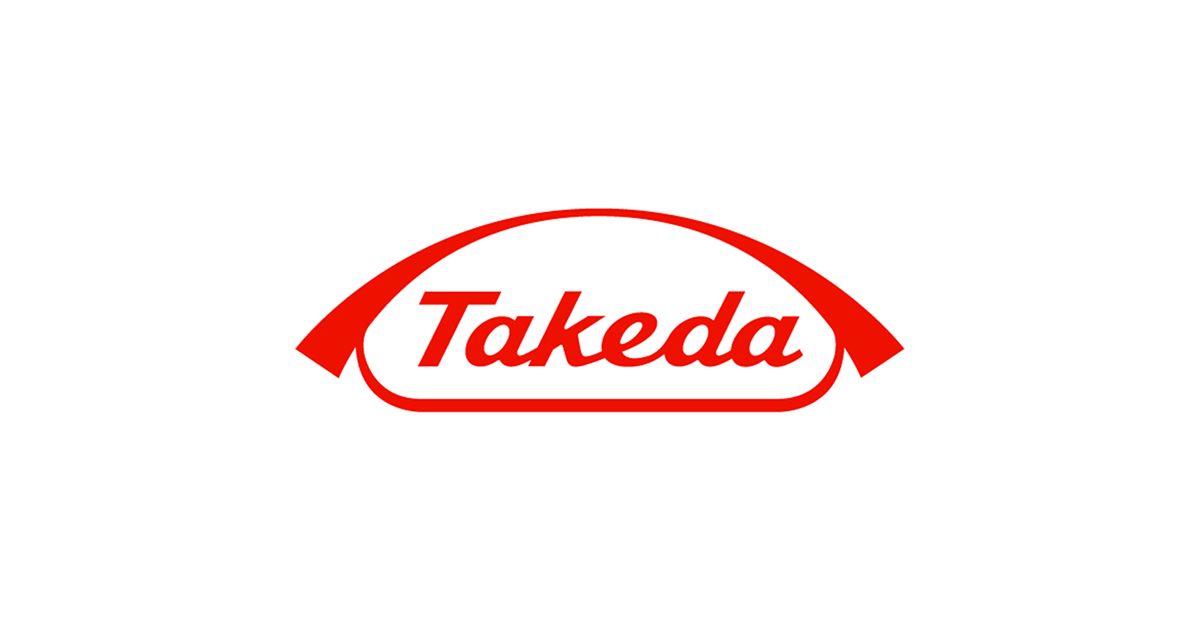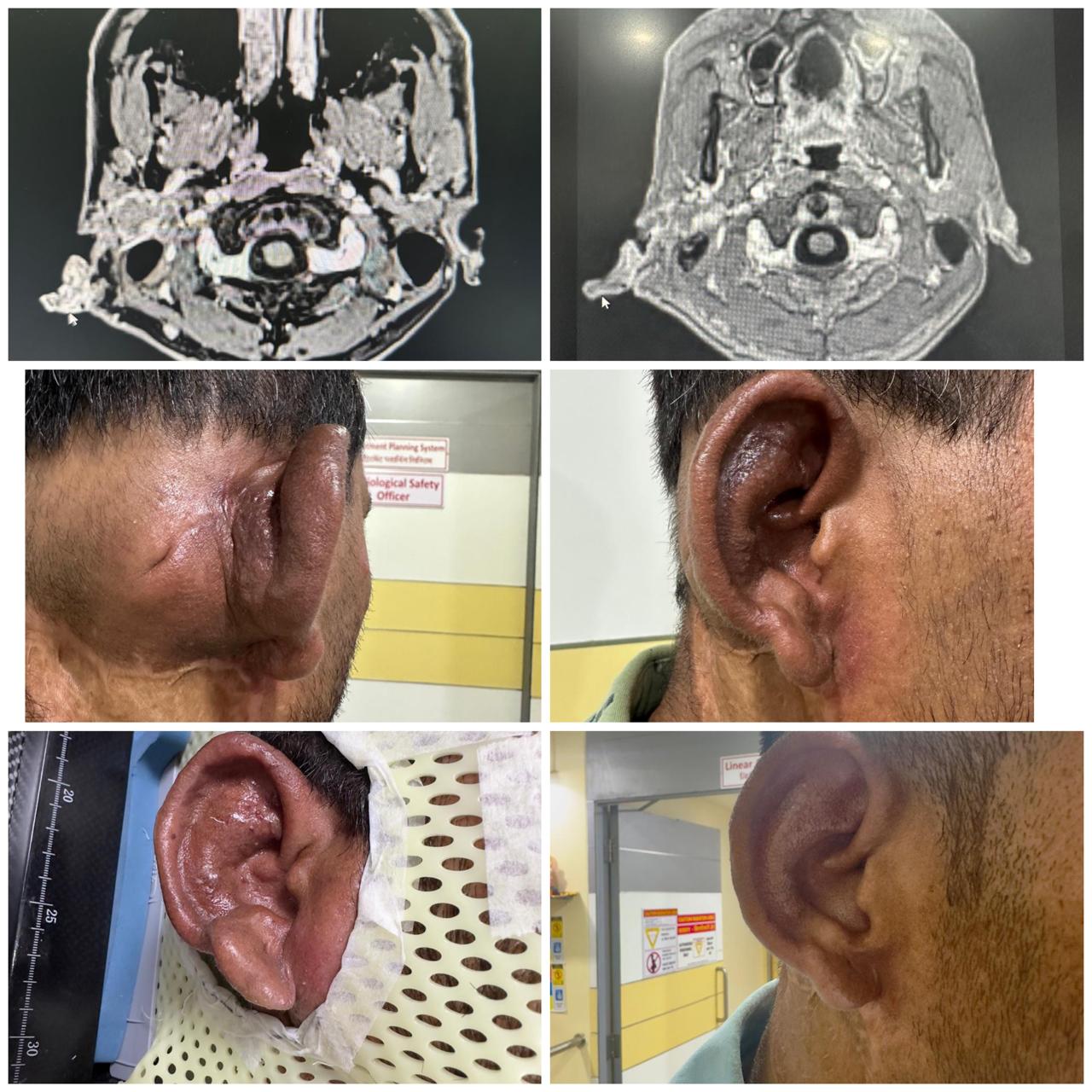Takeda launches CINRYZE™ in India, the first C1-I NH for prophylaxis in hereditary angioedema patients
CINRYZE™ is plasma-derived C1-I NH approved for routine prevention (prophylaxis), short-term prevention or pre-procedure prevention, and acute attacks of HAE. Among adult HAE patients, 51% miss at least one day of work (mean 3.3

- CINRYZE™ is plasma-derived C1-I NH approved for routine prevention (prophylaxis), short-term prevention or pre-procedure prevention, and acute attacks of HAE.
- Among adult HAE patients, 51% miss at least one day of work (mean 3.3 days), 44% students miss at least one day of school (mean 1.9 days) and 59% miss at least one day of leisure activities (mean 2.7 days) as result of their most recent HAE attacks.[1]
- With strong clinical evidence, CINRYZE™ is proven to reduce the frequency and severity of attacks with fixed dosing regimen.
Takeda Biopharmaceuticals India Private Limited (formerly known as Baxalta Bioscience India Pvt. Ltd.), a global values-based, R&D-driven biopharmaceutical leader launched CINRYZE™ an innovative injectable prescription medicine for the treatment of hereditary angioedema (HAE) patients. With eight years of global clinical experience proving efficacy and safety, CINRYZE™ has the potential to mark a breakthrough in the episodic treatment, short and long-term prophylaxis for HAE. Moreover, CINRYZE™ is the pioneer C1 esterase inhibitor (C1-I NH) approved by the FDA & EMA for the symptomatic management of HAE and for preventing future angioedema attacks.[2]
CINRYZE™ is indicated in India for:
- Routine prevention (prophylaxis) of angioedema attacks in adults, adolescents and children 6 years of age and above with HAE[3].
- Treatment of angioedema attacks and pre-procedure prevention of angioedema attacks in adults, adolescents and children 2 years of age and above with HAE [3].
Speaking at the launch, Serina Fischer, General Manager, Takeda Biopharmaceuticals India Private Limited said, “At Takeda, we are committed to bringing innovative treatment to fulfil the unmet medical needs across our core therapy areas. We are confident that the launch of Cinryze will bridge the gap in the treatment of HAE patients in India. The launch furthers our commitment towards rare diseases patients in India.”
Sony Paul, Franchise Head, Rare Diseases, Takeda Biopharmaceuticals India Private Limited added, “As per data, there are likely to be more than 30,000[4] undiagnosed patients at present in the country. These patients are suffering due to the lack of diagnosis and treatment. With the launch of Cinryze, our aim is to treat acute attacks of HAE and prevent future HAE attacks by prophylactic regime improving the quality of life of HAE patients.”
| Economic costs and impact on QoL with HAE
· HAE is associated with impaired emotional processes (alexithymia) and increased stress among paediatric patients [9] · Adults with HAE were more likely to exhibit depressive symptoms than adults in the general population [1] · Sick days due to HAE and the need to work reduced hours because of HAE were estimated to cost $6,045 per patient per year and accounted for 11.5% of all socioeconomic costs as estimated by a study conducted in the United States [10] |
Hereditary Angioedema (HAE) is a rare genetic condition that causes swelling in different parts of the body like limbs, face, abdomen, and larynx [5,6]. HAE is caused by a mutation in the gene which produce protein called the C1 esterase inhibitor leading to its reduced level or compromised functioning. [6] Symptoms of HAE often present in childhood, and while attacks can occur at any age, early onset may predict a more severe disease course [6]. Attacks often occur in children without a clear trigger,[5] and may affect a child’s participation in school, activities, and sports, which can leave them feeling socially isolated [7,8]. It can be life-threatening in severe cases in which the swelling attacks can manifest in the larynx (voice box), or trachea (windpipe) [5,6].
The disease is usually identified by recurrent episodes of fluid accumulation outside the blood vessels, causing rapid swelling of body tissues. The symptoms of HAE could be like an allergic reaction; however, the potential outcome could be life-threatening in case of HAE. Due to the lack of awareness among healthcare professionals, HAE is highly underdiagnosed in the country.
Takeda Biopharmaceuticals India Private Limited (formerly known as Baxalta Bioscience India Private Limited) is a part of Takeda Pharmaceutical Company Limited’s group of companies headquartered in Japan. The company focuses on immunology, genetic diseases, haematology, oncology and gastrointestinal portfolios in the country. As a global leader in pharmaceuticals, Takeda has been focusing on driving comprehensive research to support the development of effective and innovative treatments in the company’s chosen therapy areas.
HAE, hereditary angioedema; QoL, Quality of life; FDA, Food and Drug Administration; EMA, European Medicines Agency
References:
- Lumry WR, Castaldo AJ, Vernon MK, et al. The humanistic burden of hereditary angioedema: Impact on health-related quality of life, productivity, and depression. Allergy Asthma Proc. 2010;31:407-14.
- Cinryze®. USFDA PI. March 2022. Cinryze®. SmPC EMA. October 2020
- CINRYZE®. Indian PI. Feb 2022.
- Jindal AK, Bishnoi A, Dogra S. Hereditary Angioedema: Diagnostic Algorithm and Current Treatment Concepts. Indian Dermatology Online Journal. 2021;12(6): 796-804. https://doi.org/10.4103/idoj.idoj_398_21
- Cicardi M, Bork K, Caballero T, et al. Evidence-based recommendations for the therapeutic management of angioedema owing to hereditary C1 inhibitor deficiency: consensus report of an International Working Group. Allergy. 2012; 67(2):147-157.
- Zuraw BL. Hereditary angioedema. N Engl J Med. 2008;359(10):1027-1036.
- Read N, Lim E, Tarzi MD, et al. Patient hereditary angioedema: a survey of UK service provision and patient experience. Clin Exp Immunol 2014; 178:473-88.
- Mendivil J, Murphy R, Cruz Mdl, et al. Clinical characteristics and burden of illness in patients with hereditary angioedema: findings from a multinational patient survey. Orphanet Journal of Rare Diseases. 2021 (16).
- Savarese L, Bora M, Falco RD, et al. Emotional processes and stress in children affected by hereditary angioedema with C1-inhibitor deficiency: a multicenter, prospective study Orphanet J Rare Dis. 2018;13:115;
- Castaldo AJ, Jervelund C, Corcoran D, et al. Assessing the cost and quality-of-life impact of on-demand–only medications for adults with hereditary angioedema. Allergy Asthma Proc. 2021;42:108-17.
| Media Contacts: | |
| Yashi Shrivastav
yashi.shrivastav@adfactorspr.com +91 75660008466 |
Anindya Tripathi
anindya.tripathi@adfactorspr.com +91 99712 90164
|
ABBREVIATED PRESCRIBING INFORMATION
CINRYZE™ 500 IU powder
C1 esterase inhibitor (human)
Qualitative and Quantitative Composition: Each single use powder vial contains 500 International Units (IU) of C1 inhibitor (human) produced from the plasma of human donors, Trisodium citrate dihydrate 14.7 mg, sodium chloride 20.5 mg, L-valine 10.3mg, L-analine 6mg, L-theronine 23.5 mg and sucrose 100mg. Clinical Particulars: Therapeutic indications: Treatment of angioedema attacks in adults, adolescents and children 2 years of age and above with hereditary angioedema (HAE). Pre-procedure prevention of angioedema attacks in adults, adolescents and children 2 years of age and above with hereditary angioedema (HAE). Routine prevention (prophylaxis) of angioedema attacks in adults, adolescents and children 6 years of age and above with hereditary angioedema (HAE). Posology and Method of Administration: CINRYZE™ therapy is for intravenous route only. Patients may also administer CINRYZE™ after training under the guidance of health care professional. The reconstituted product should be inspected fir particulate matter prior to administration (do not infuse if particles are seen). The reconstituted product should be administered by intravenous injection at a rate of 1 ml per minute. Treatment of angioedema attacks: Adult & adolescents (12 to 17 years old): 1000 IU of CINRYZE™ at the first sign of the onset of an angioedema attack. A second dose of 1000 IU may be administered if the patient has not responded adequately after 60 minutes. For children 2 to 11 years who weigh > 25 kg: 1000 IU of CINRYZE™ at the first sign of the onset of an angioedema attack. A second dose of 1000 IU may be administered if the patient has not responded adequately after 60 minutes. For children 2 to 11 years who weigh between 10-25 kg: 500 IU of CINRYZE™ at the first sign of the onset of an angioedema attack. A second dose of 500 IU may be administered if the patient has not responded adequately after 60 minutes. Pre procedure Prevention of angioedema attacks. Adult & adolescents (12 to 17 years old): 1000 IU of CINRYZE™ within 24 hours before a medical, dental or surgical procedure. For children 2 to 11 years who weigh > 25 kg: 1000 IU of CINRYZE™ within 24 hours before a medical, dental or surgical procedure. For children 2 to 11 years who weigh between 10-25 kg: 500 IU of CINRYZE™ within 24 hours before a medical, dental or surgical procedure. Routine prevention of angioedema attacks. Adults and adolescents (12 to 17 years old): 1000 IU of CINRYZE™ every 3 or 4 days for routine prevention against angioedema attacks. Doses up to 2,500 IU every 3 to 4 days may be considered based on individual patient response. Children 6 to 11 years of age: 500 IU of CINRYZE™ every 3 or 4 days for routine prevention against angioedema attacks. Doses up to 1000 IU every 3 to 4 days may be considered based on individual patient response. Contraindications: CINRYZE™ is contraindicated in patients who have manifested life-threatening immediate hypersensitivity reactions, including anaphylaxis to the product.
Special warnings and precautions for use. Thrombotic events: Thrombotic events have been reported in patients receiving CINRYZE™, and patients with known risk factors should be monitored closely. Transmissible Agents: Standard C is made from the human blood, and it may carry a risk of transmitting infective agents. Hyper-sensitivity: Hypersensitivity reactions may have symptoms like angioedema attacks. Interaction with other drugs: No interaction studies have been conducted. Fertility, Pregnancy, and Lactation Pregnancy: It is not known that CINRYZE™ when administered to a pregnant women can harm fetus or can affect reproduction capacity. CINRYZE™ should be given to pregnant women only when clearly indicated. It is not known whether CINRYZE™ is excreted in human milk, and caution must be exercised when it is administered during lactation. Effects on Ability to Drive and Use Machines: Based upon the clinical data currently available, CINRYZE™ has a minor influence on the ability to drive and use machines. Undesirable Effects: The very common adverse reactions following CINRYZE™ infusion include headache and nausea. The common adverse reactions include hypersensitivity,
dizziness, rash, erythema, pruritus, injection site reactions and pyrexia. The uncommon adverse reactions include hot flush, phlebitis, venous burning and venous thrombosis. Storage and handling instructions: Do not store above 25°C. Do not freeze. Store in the original package in order to protect from light. After reconstitution use the reconstituted product immediately. If immediate use is not possible, chemical and physical in use stability has been demonstrated for 3 hours at room temperature (150C -250C) For storage conditions after reconstitution of the medicinal product.
Manufactured by:
Takeda Manufacturing Austria AG, Industriestrasse 67,1221 Vienna, Austria
Name and Address of Imported and Marketed by :
Baxalta Bioscience India Pvt. Ltd,
Khasra No. 1/24, 25, 3/1/1, Gala No. 1A-1F, 2A-2E,
3B-3E and 4A-4E, Warehouse No. 1, Sector-76,
Hasanpur Darbaripur, Gurgaon, Haryana India
Suspected Adverse Reactions should be reported at: AE.India@takeda.com.
Consumer Care No: 00080 0050 4087
Date of Preparation of the API: November 2022
Based on India PI-Date of revision of text: Feb 2022
Further information is available on request.
C-APROM/IN/CIN/0011






